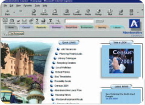The second World Usability Day, focusing on “Making Life Easy”, built on the success of its inaugural year.
World Usability Day 2006 festivities varied with social and professional cultures that celebrated the day. Several cities organized design competitions to redesign existing systems that maximize usability.
With events across forty countries and five continents, outstanding media coverage, and feedback from organizers and volunteers, World Usability Day 2006 were deemed a huge success.
For international organizations, feedback from users at the local level is essential to product success. Organizing multinational events and sharing the results can help achieve business goals.
In many countries, newspapers and popular magazines report on the latest products and services to reach the marketplace. In these publications, reporters and reviewers comment on whatever they believe promotes sales, marketplace success, and consumer preference. More so than in years past, however, they talk about user-centered design.
This media focus mirrors corporate interest. Recently, a…
On November 14, 2006, at least 40,000 people were thinking about usability. Clearly World Usability Day was touching something important in many people’s lives. World Usability Day created an opportunity for people to come together and connect with people in other countries with a shared focus—of making things that work better.
Ten thousand volunteers knew that…
The UK’s requirement of local councils to “carry out 100 percent of council services electronically by the end of 2005” lead to updates to the first Salisbury District Council website.

Aberdeenshire Council’s website followed a user-centered design process, simplifying the journeys through a large site and providing easier online information and services.
Difficult-to-use tools create user mistrust, which prevent new technologies from succeeding financially. Needs, habits, and characteristics of users must be considered for a product to be successful.
Websites of public authorities are barely taking advantage of the power of the participatory citizen. We studied the main sites of thirty public authorities and identified several innovative approaches.
